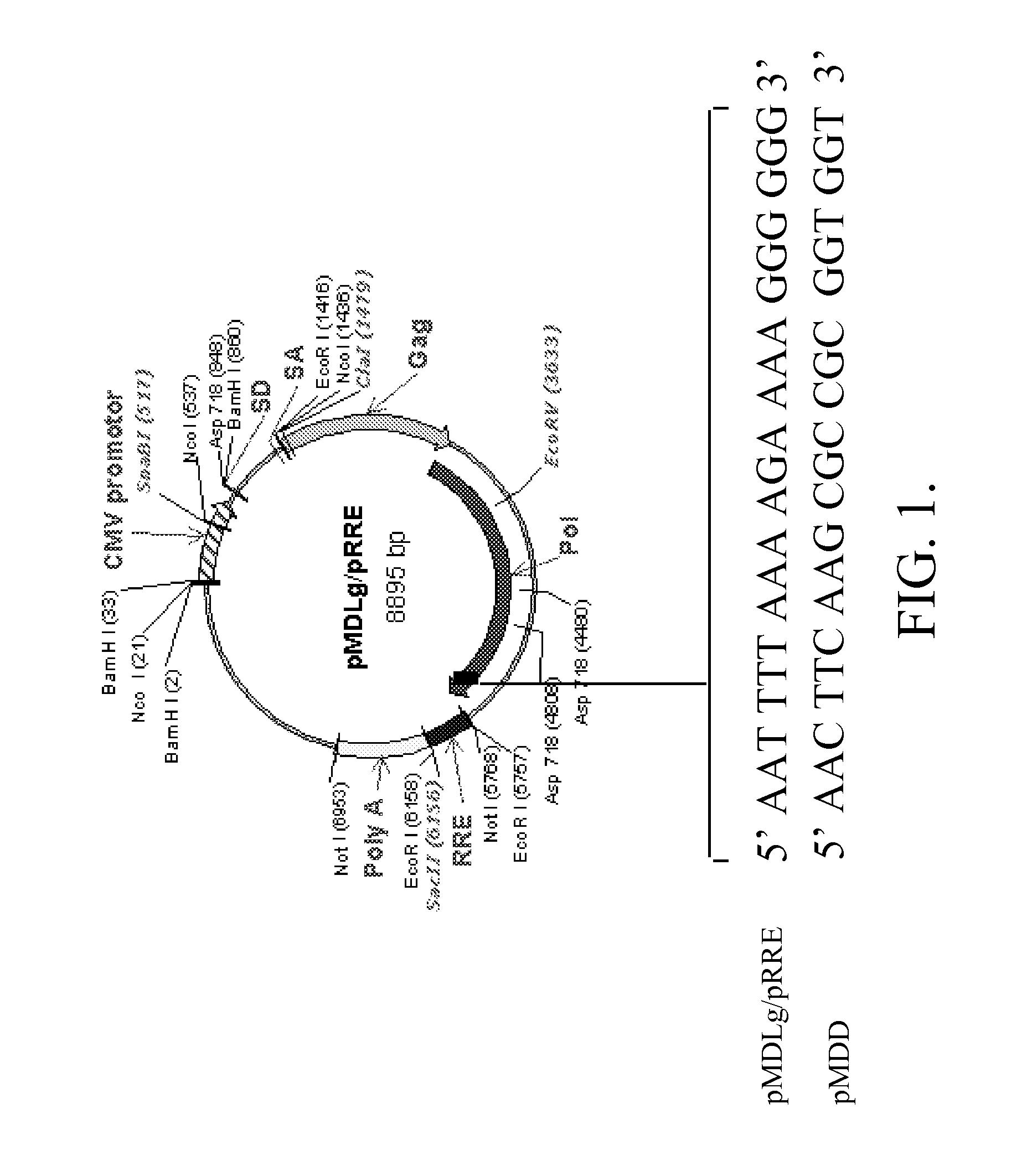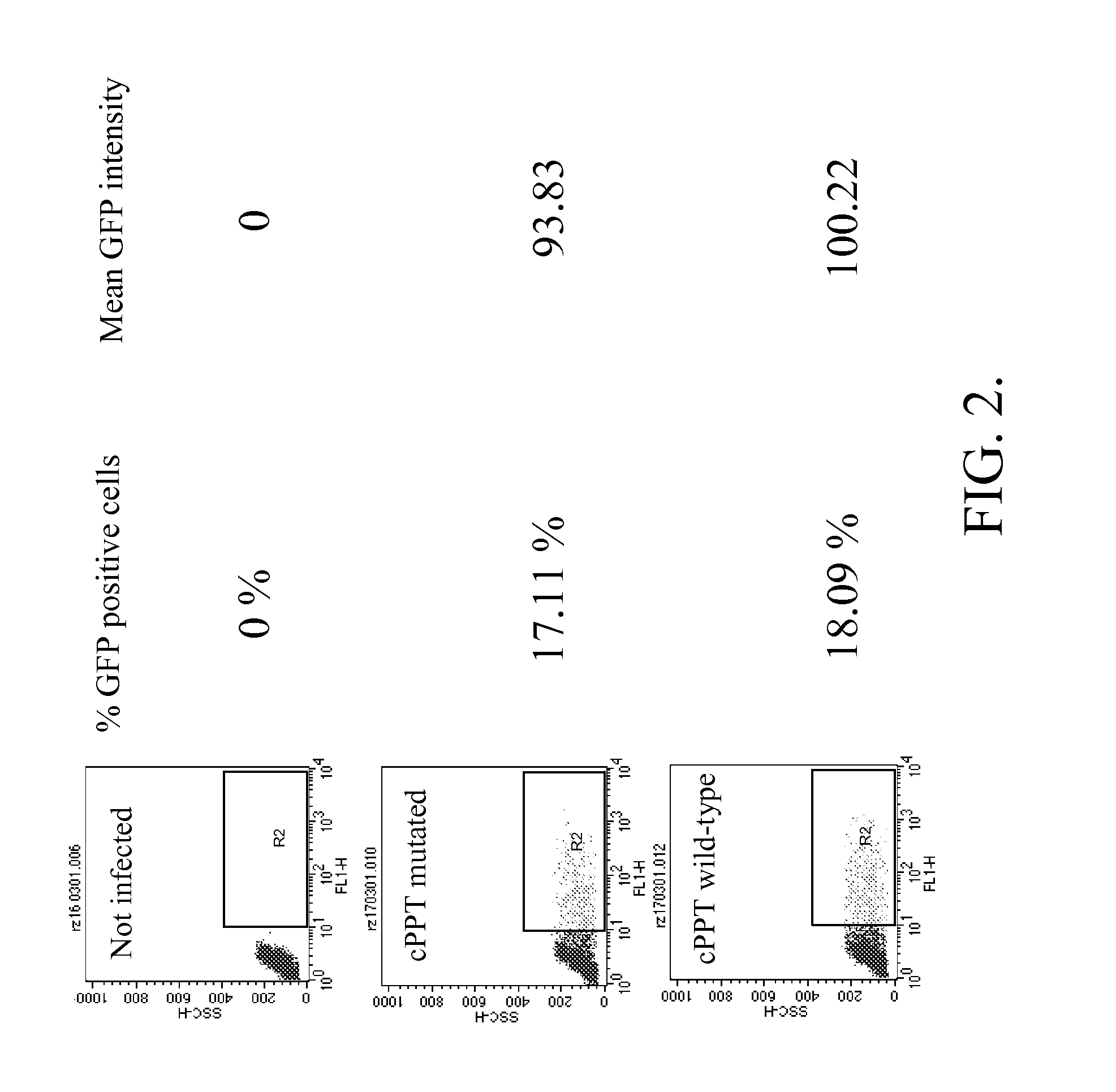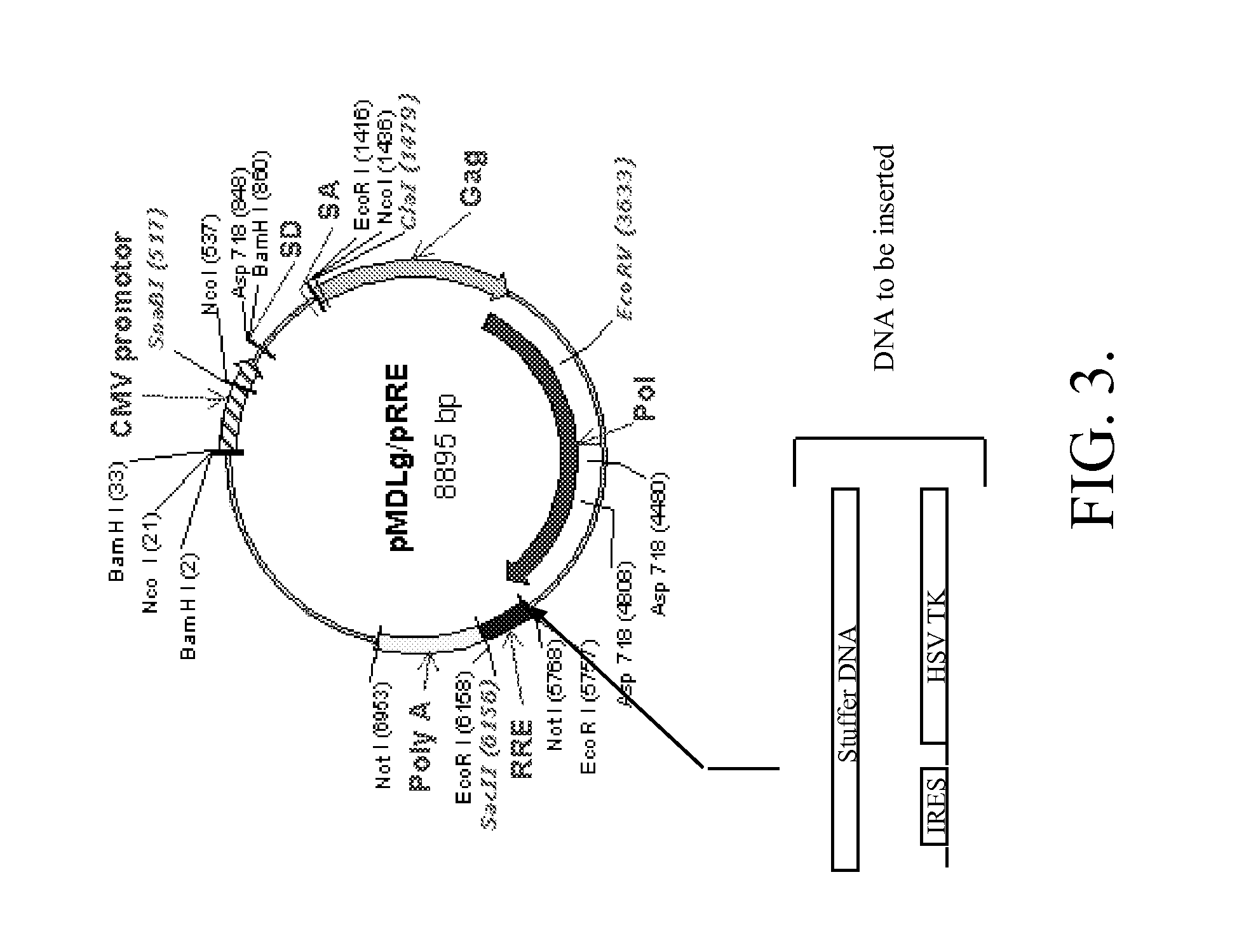Methods and compositions relating to improved lentiviral vector production systems
a technology of lentiviral vectors and production systems, applied in the field of improved lentiviral vectors, can solve the problems that not all viruses will successfully transfect all cell types at all, and achieve the effect of improving the biosafety of lentiviral vector production
- Summary
- Abstract
- Description
- Claims
- Application Information
AI Technical Summary
Benefits of technology
Problems solved by technology
Method used
Image
Examples
example 1
Modification of a Lentiviral Packaging Plasmid Central Polypurine Tract (cPPT / cTS)
[0182]Modifications to the sequence of the cPPT / cTS region may be made so that nuclear import is severely hindered without interfering with the activity of the pol gene of which the cPPT / cTS region is a part (Zennou, et al., 2000). Incorporated into a packaging plasmid, such sequences will be represented in any RCRs that may arise during the production or use of lentiviral vectors and so will effectively inhibit the nuclear import of these undesired RCRs. The packaging plasmid pMDLD incorporates modifications to the cPPT / cTS region that effectively inhibit nuclear import of lentiviral genomes (FIG. 1).
[0183]Plasmid pMDLD is derived from pMDLg / pRRE, which has been described fully elsewhere (Dull, et al., 1998, incorporated herein by reference). Briefly, pMDLg / pRRE is a CMV-driven expression plasmid that contains only the gag and pol coding sequences from HIV-1. Additionally, a 374-bp RRE-containing sequ...
example 2
Insertion of a Stuffer Sequence into the Packaging Plasmid Enhances Biosafety
[0187]The biosafety of modifications to the sequence of the cPPT / cTS region is enhanced when the overall length of any resultant RCR genome is sufficiently large. Such an increase in size is obtained by inserting a stuffer sequence into the packaging plasmid pMDLD described above.
[0188]To test whether the infectivity of the HIV-1 virus in the absence of an active cPPT / cTS sequence element depends on viral genome size, we have generated HIV-1 proviral genomes of decreasing size by removing sequence stretches encoding the envelope protein or accessory proteins. The missing genetic information was provided in trans to complement the defective viruses. The relative infectivity of HIV 1 viruses with different genome sizes was assayed on P4 cells.
[0189]The decreasing genome size did not affect the infectivity of the viruses containing a cPPT / cTS sequence element. In contrast, the infectivity of the mutated viruse...
example 3
Creation of Replication Inhibiting Mutant 5′ LTR poly(A) Hairpins
[0191]Some mutations in the 5′ R-U5 region of the Long Terminal Repeat (LTR) have profound inhibitory effects on virus replication (Das, et al., 1997). Two mutated 5′ LTR poly(A) hairpin sequences (mutA and mutC, corresponding to SEQ ID NO: 5 and SEQ ID NO: 6, respectively) were selected from a panel of altered poly(A) hairpin sequences as disclosed by Das, et al., (1997), (see FIG. 8). These two mutants were chosen because they have the strongest inhibitory effect on virus replication. Previous partial characterization of these mutations suggested that the mutations might affect a step of viral replication that is not required for the vector function.
[0192]To test the effects of these mutant sequences, mutations A and C in the R region of the 5′ LTR were introduced into the plasmid pHR′CMV GFP SIN (Zufferey, et al., 1998) so as to replace the wild-type sequence. Vector was produced using the wild-type or mutated trans...
PUM
 Login to View More
Login to View More Abstract
Description
Claims
Application Information
 Login to View More
Login to View More - R&D
- Intellectual Property
- Life Sciences
- Materials
- Tech Scout
- Unparalleled Data Quality
- Higher Quality Content
- 60% Fewer Hallucinations
Browse by: Latest US Patents, China's latest patents, Technical Efficacy Thesaurus, Application Domain, Technology Topic, Popular Technical Reports.
© 2025 PatSnap. All rights reserved.Legal|Privacy policy|Modern Slavery Act Transparency Statement|Sitemap|About US| Contact US: help@patsnap.com



